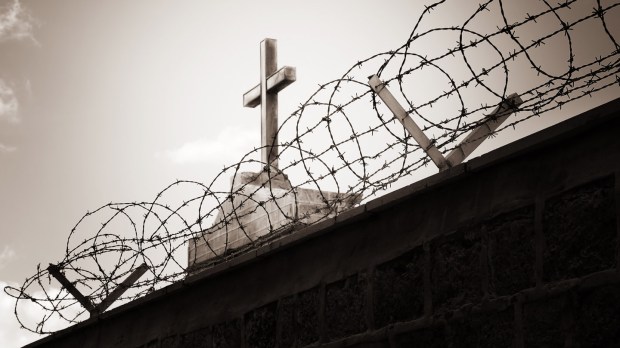Christians and Muslims throughout the world experienced harassment in more countries than any other religious groups in 2018. It’s a pattern that has remained consistent since 2007, when the Pew Research Center began tracking the level of government restrictions on religion.
Christians and Muslims are the two largest religious groups in the world and are more geographically dispersed than smaller groups.
In 2018, Christians reportedly experienced harassment in 145 countries, up from 143 countries in 2017, Pew reported. In Israel, for instance, an Ethiopian Christian monk was reportedly injured by police officers who were attempting to evict him from his church. And in Burundi, a Christian man died after he was imprisoned and allegedly beaten by police for refusing — on the basis of his religious conscience — to register to vote.
The study looks at the year 2018 and finds that the global median level of government restrictions on religion — laws, policies and actions by officials that impinge on religious beliefs and practices — continued to climb, reaching an all-time high since the Pew Research Center began tracking these trends in 2007.
The increase from 2017 to 2018 was relatively modest, but it contributed to a substantial rise in government restrictions on religion over more than a decade, Pew said. In 2007, the first year of the study, the global median score on the Government Restrictions Index (a 10-point scale based on 20 indicators) was 1.8. After some fluctuation in the early years, the median score has steadily risen since 2011 and now stands at 2.9 for 2018, the most recent full year for which data is available.
More governments using force
The increase in government restrictions reflects a wide variety of events around the world, including a rise from 2017 to 2018 in the number of governments using force — such as detentions and physical abuse — to coerce religious groups. The total number of countries with “high” or “very high” levels of government restrictions has been mounting as well. Most recently, that number climbed from 52 countries (26% of the 198 countries and territories included in the study) in 2017 to 56 countries (28%) in 2018.
Of the five regions examined in the study, the Middle East and North Africa continued to have the highest median level of government restrictions in 2018 (6.2 out of 10). However, Asia and the Pacific had the largest increase in its median government restrictions score, rising from 3.8 in 2017 to 4.4 in 2018, partly because a greater number of governments in the region used force against religious groups, including property damage, detention, displacement, abuse and killings.
Some countries in the Asia-Pacific region saw all-time highs in their overall government restrictions scores. This includes China, which continued to have the highest score on the Government Restrictions Index (GRI) out of all 198 countries and territories in the study. China has been near the top of the list of the most restrictive governments in each year since the inception of the study, and in 2018 it reached a new peak in its score (9.3 out of 10).
While Asia and the Pacific had the largest increases in their Government Restrictions Index scores, the Middle East and North Africa still had the highest median level of government restrictions, with a score of 6.2 on the GRI — up from 2017, more than double the global median (2.9), and at its highest point since the aftermath of the Arab Spring in 2012. The rise in the GRI scores in the Middle East and North Africa was partly due to more governments using force against religious groups.
Sub-Saharan Africa was the only other region to experience an increase in its median level of government restrictions in 2018 (from 2.6 to 2.7), reaching a new high following a steady rise in recent years. While government use of force against religious groups decreased in the region, both harassment of religious groups and physical violence against minority groups went up.
The survey is based in part on annual reports on international religious freedom by the U.S. State Department and the U.S. Commission on International Religious Freedom, as well as publications by a variety of European and United Nations bodies and several independent, nongovernmental organizations.
The full report can be read here.

